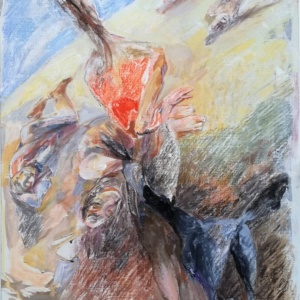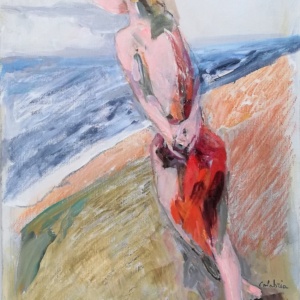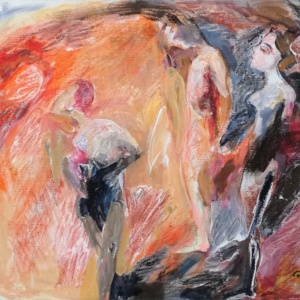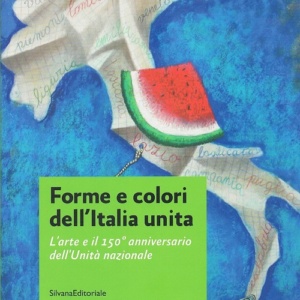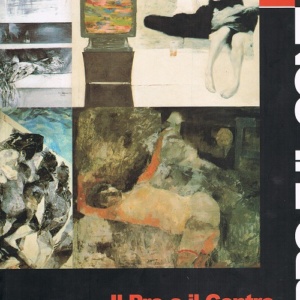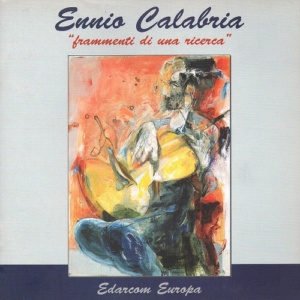Ennio Calabria
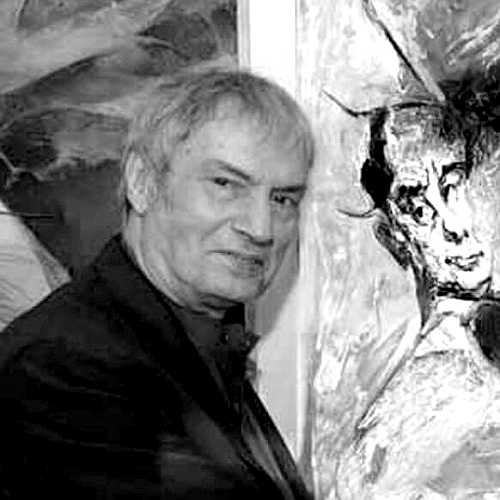
PAINTINGS
ART PRINTS
CATALOGUES
VIDEO
Attardi, Calabria, Vespignani | Galleria d'Arte Edarcom Europa | october 2006
ARTISTS
Ennio Calabria was born in Tripoli in 1937. In 1955 he passed his senior high art school leaving examination and started attending the Free School of the Nude at the Academy of Fine Arts in Rome. His first solo exhibition was held at the city’s La Feluca art gallery in 1958. In the same year, he was acclaimed by critics as one of the most significant emergent painters of the 1950s. A keen observer of his times, his paintings deal with both social and existential issues.
Calabria first showed at the Rome Quadrenniale (in its 7th edition) in 1959, and then again in 1972, 1986 and 1999. In 1961, together with painters Ugo Attardi, Fernando Farulli, Alberto Gianquinto, Piero Guccione, and Renzo Vespignani, and critics Antonio Del Guercio, Dario Micacchi and Duilio Morosini, he founded the group Il Pro e il Contro (The Pro and the Con), which became an important point of reference for research into figurative painting in Italy. In 1964 he was invited to the Venice Biennale, and from 1974 to 1978 he was a member of its Board of Directors. In 1985 he exhibited in Gucci’s Gallery in New York, and in the same year he presented his first retrospective at the Rotonda della Besana in Milan. The same exhibition subsequently transferred to the National Museum of Castel Sant’Angelo in Rome in 1987. On that occasion, an extensive monograph devoted to his work was published with critical essays by Mario De Micheli and Giovanni Carandente. In 1988, a major exhibition of his work presented by André Verdet was held at the Musée Municipal of Saint Paul De Vence, while in 1990 there was a retrospective at the Carmine Church in Taormina. In the 1990s, with the series of works Ambiguità dell’intravisto (Ambiguity of the Glimpse), he started an intense period of research, intent on arriving at the most profound definition of identity and of the form of the world and art. The theme that underpins his research is the continual metamorphosis of the individual, challenged by the disarming experience of the ever-increasing speed of social interaction. In 2001, a major retrospective was held at the National Archaeological Museum of Chieti, and in 2003, on the occasion of a traveling exhibition, the monograph Quasi la forma (Almost the Form), edited by Rita Pedonesi was published, containing critical essays by Marco Di Capua and Andrea Romoli Barberini.
From 2002 to 2005 he created a series of intense dramatic portraits inspired by Pope John Paul II, some of which appeared in 2002 in the book La forma cerca forma (Form Seeking Form), with critical essays by Marco Tonelli, Ida Mitrano and Alberto Gianquinto, and a video by A. Cimaglia and Alessandra Pedonesi. The whole cycle was subsequently exhibited, along with a new emblematic set of works, in numerous public venues: in 2004, La forma cerca forma. Verso le cose (Form seeking Form. Towards Things) at the Vittoria Colonna Museum in Pescara and at the Royal Palace of Caserta; in 2005, La forma della percezione (The Form of Perception) at the Magazzini del Sale in Siena and Latenze della luce (Latencies of Light), curated by Gabriele Simongini at the Royal Palace of Palermo. The portraits of the pope were an important stage in a long period of research that Calabria carried out with ever-increasing incisiveness, exploring the instability that increasingly marks our social relations and very thought processes. On the pictorial level, this condition of disorientation was deemed necessary in order to create a different form of subjectivity that moves towards a definition of form seeking form. In 2008, he began a new cycle of portraits entitled Un volto e il tempo (A Face and Time), shown at Museo dello Splendore in Giulianova in an exhibition curated by Carlo Fabrizio Carli. In the same year, an exhibition of the series dedicated to John Paul II was held at the Archdiocesan Museum of Cardinal Karol Wojtyla in Krakow. His latest traveling exhibition, La forma da dentro (The Shape from Within), curated by Floriano De Santi, was held at the Matalon Foundation in Milan and at the Villa Paolina Civic Museums in Viareggio. In 2017, Ida Mitrano’s monograph Ennio Calabria. Nella pittura la vita (Ennio Calabria. The Life in Painting) was published, chronicling the journey in which life, thought and art have always been inseparable, forming a unique whole. Coinciding with his eightieth birthday, the monograph was a celebration of this artist of enormous cultural depth, recognizing the distinctive quality of his creative process as well as the expressive and iconographic force of his painting. Ennio Calabria lives and works in Rome. His works are found in important Italian and international public and private collections.



